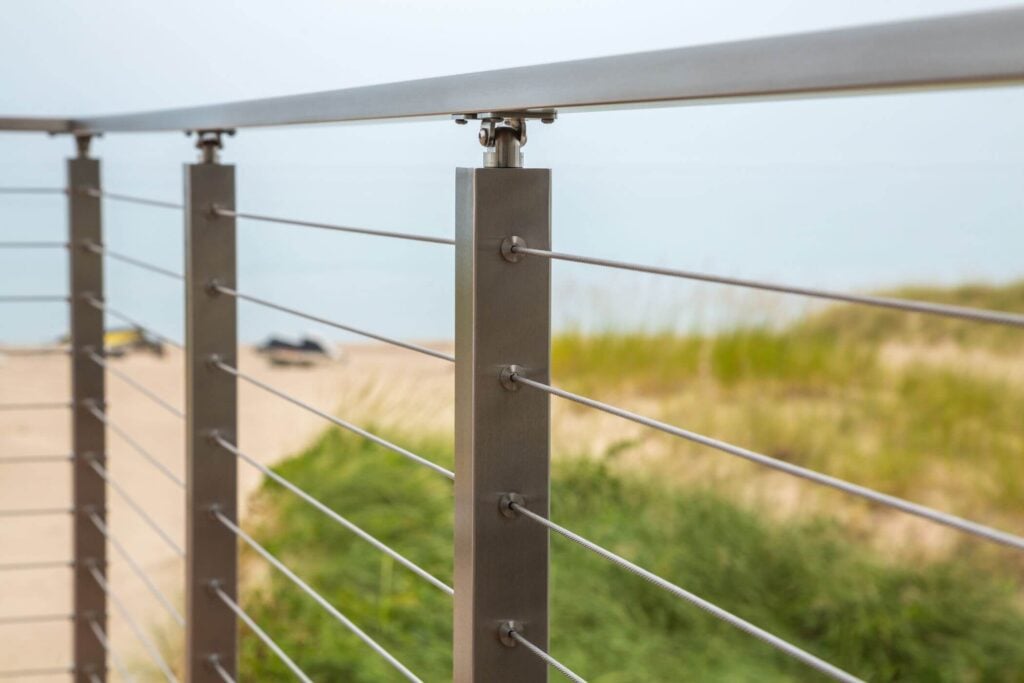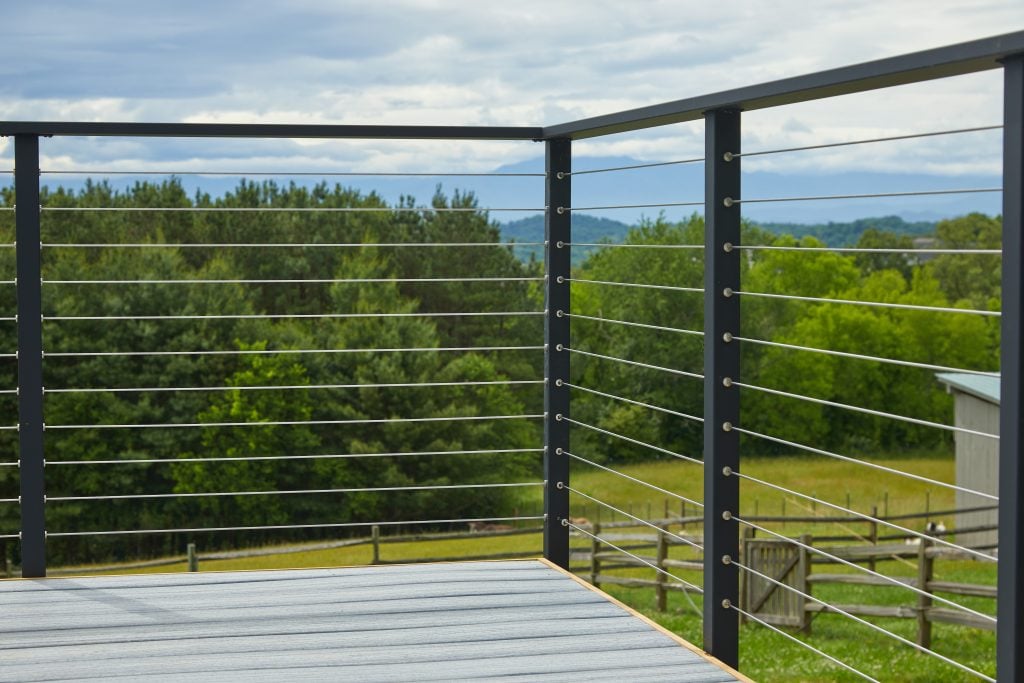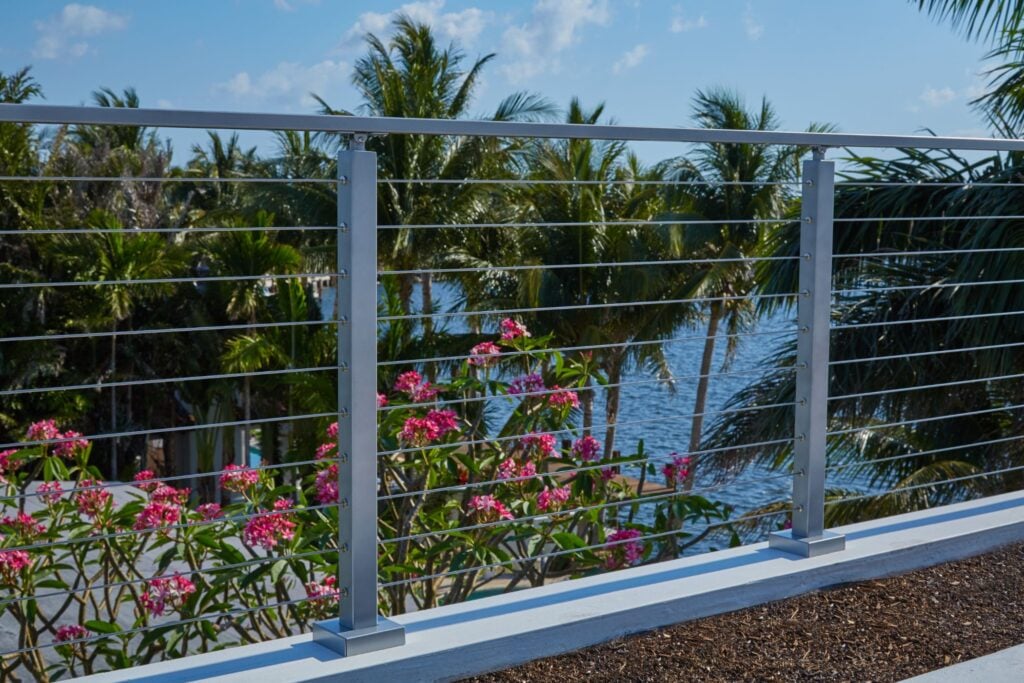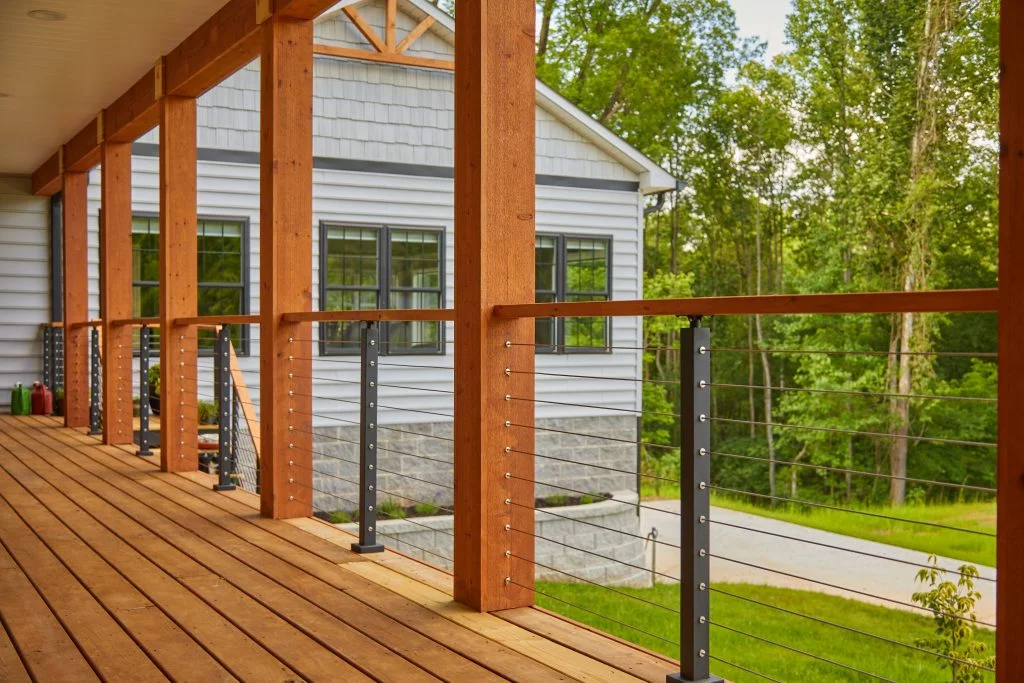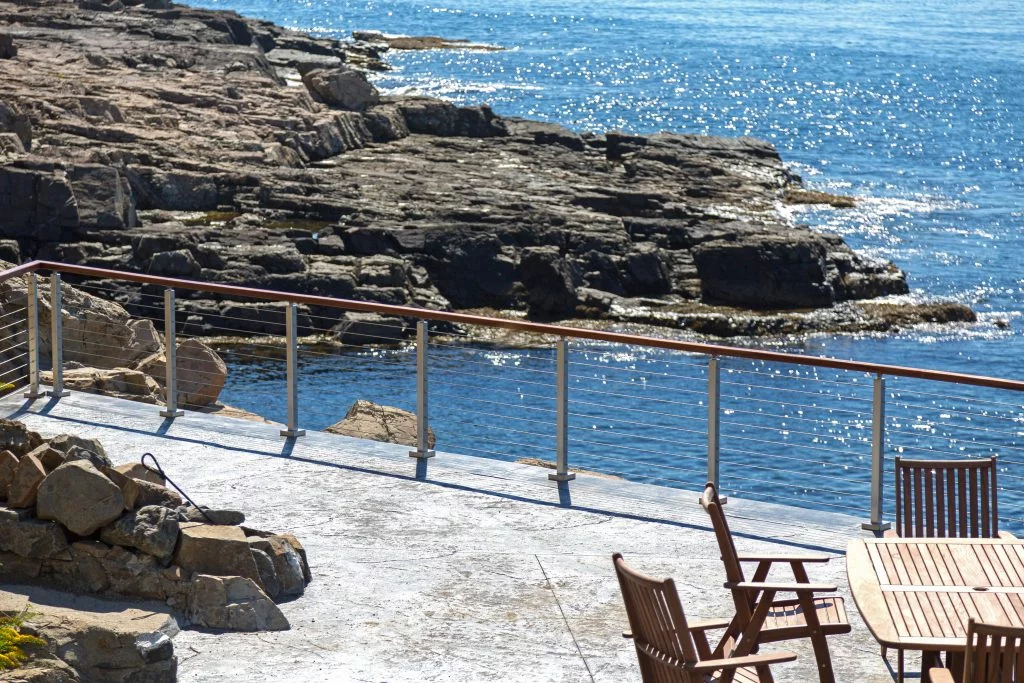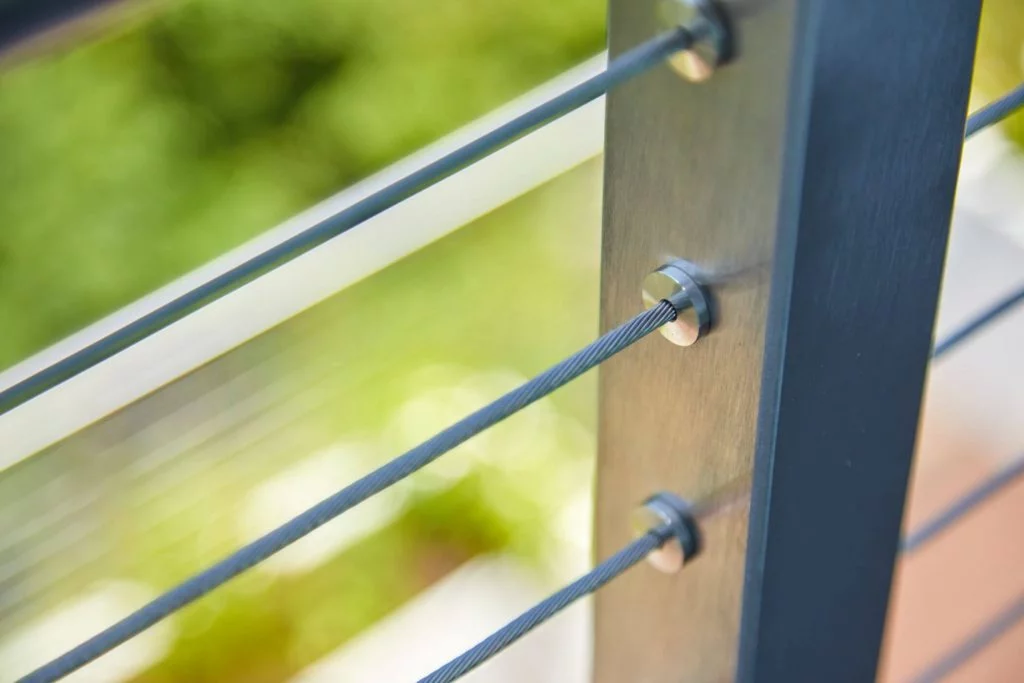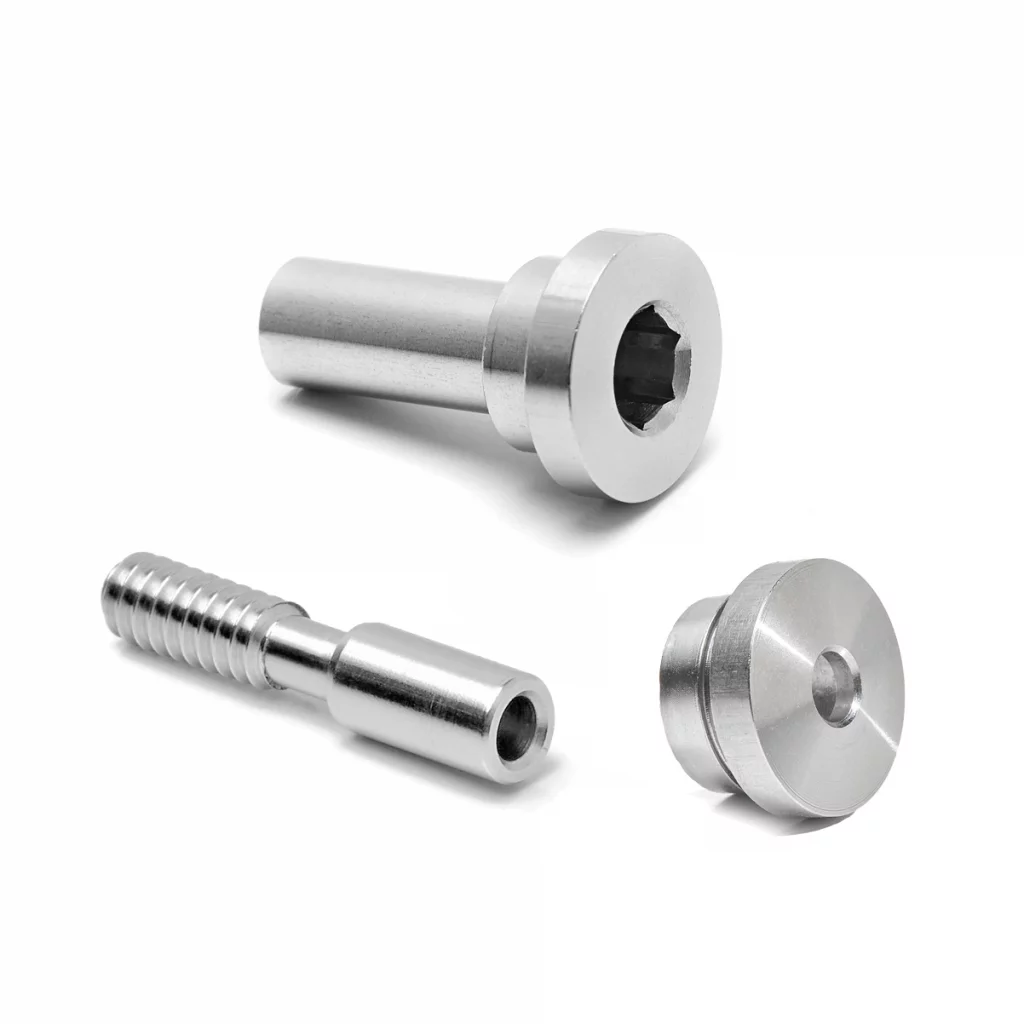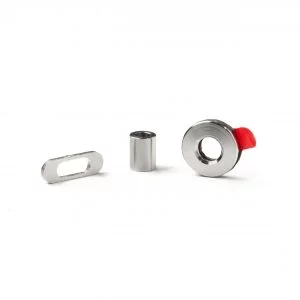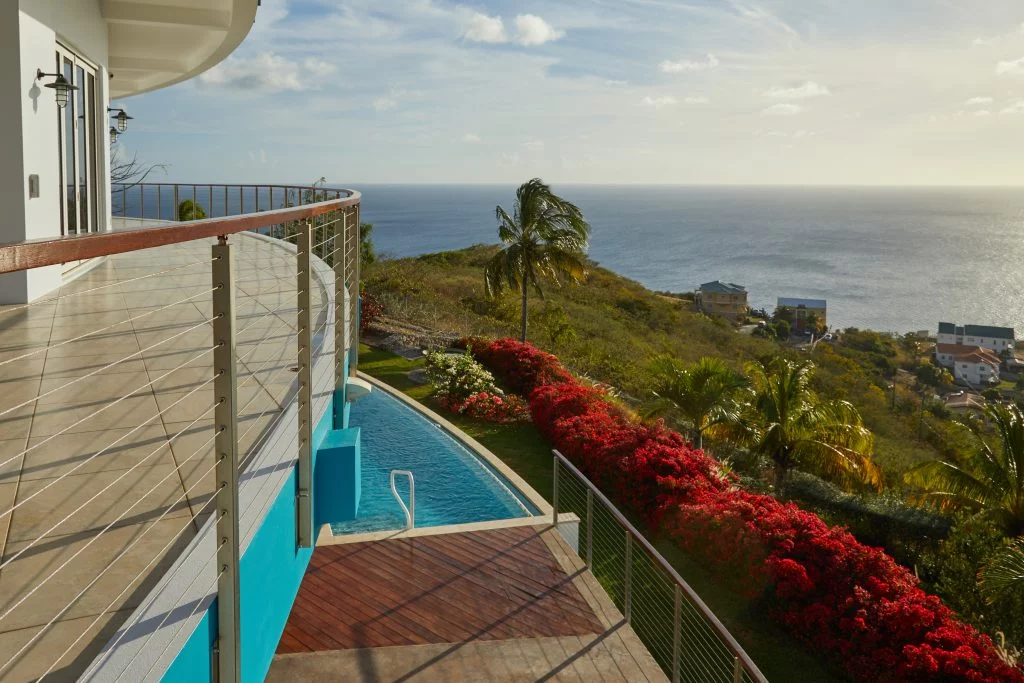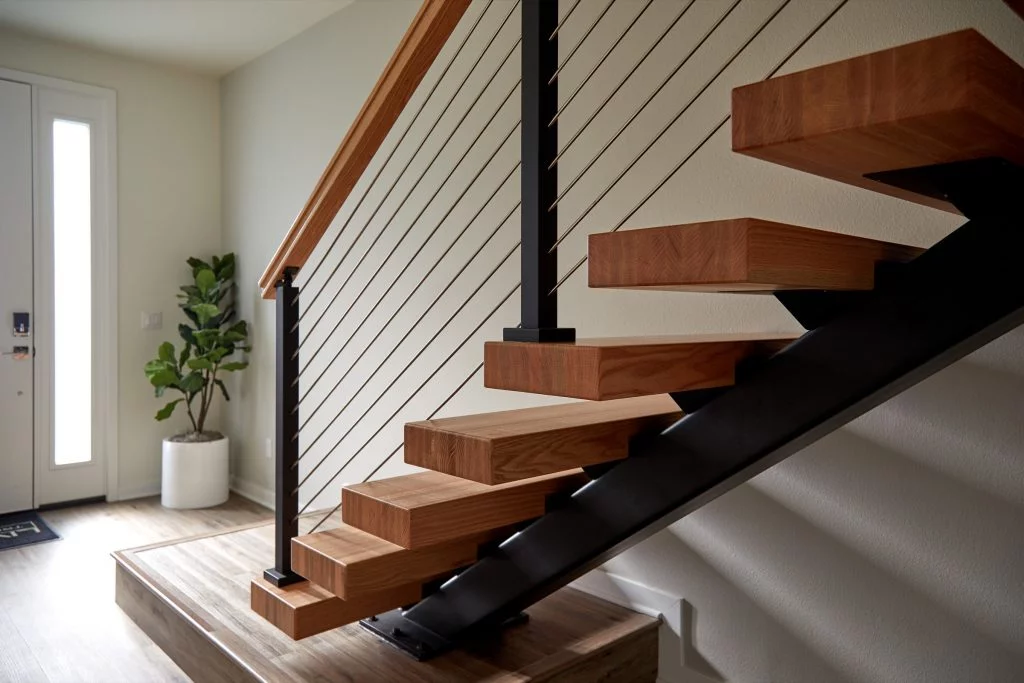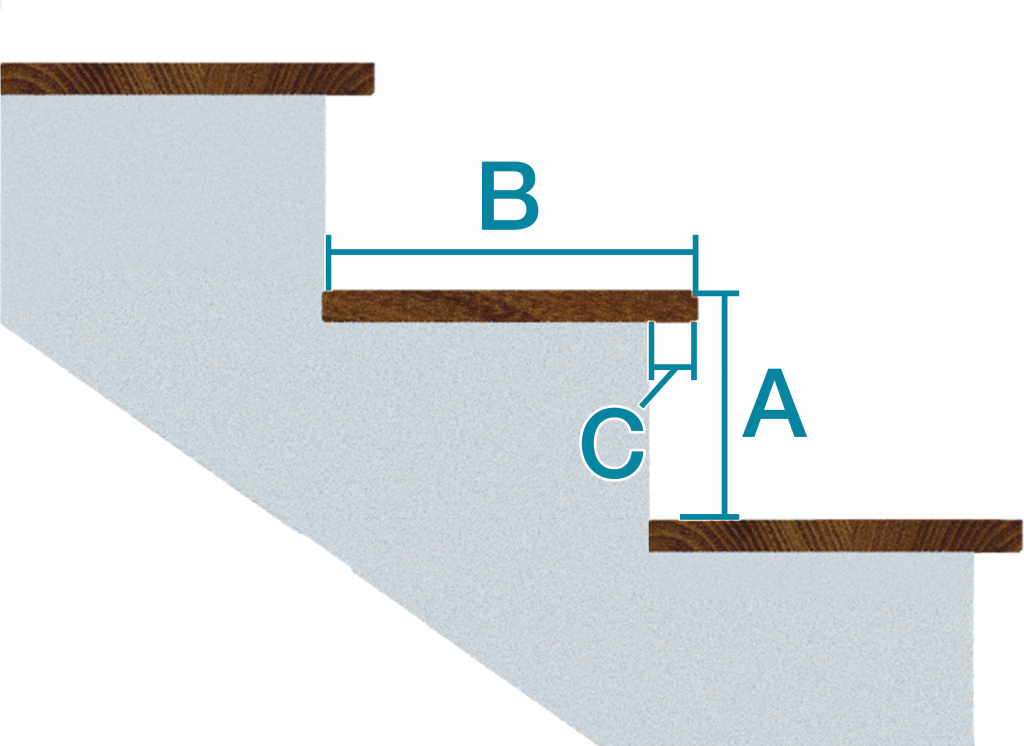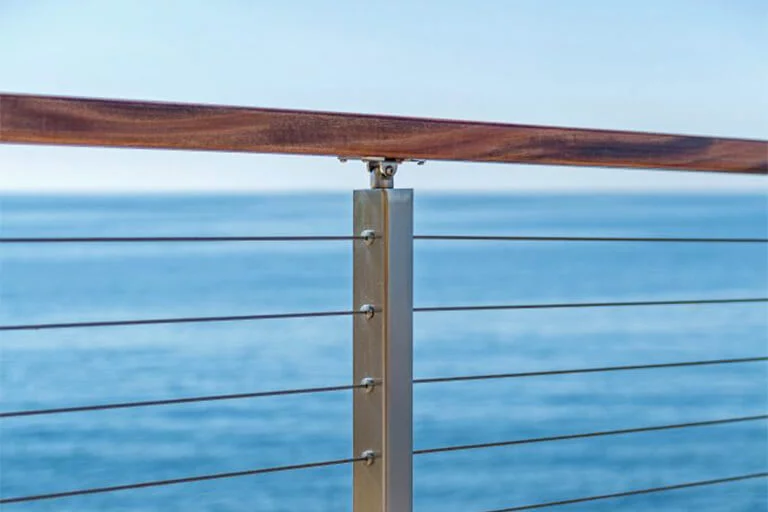What is cable railing?
Cable railing has become a modern staple in the building industry, for a number of reasons. Chief among them are its modern, minimalist look, durability, and safety. Cable railing has quickly risen as the most popular and highly sought modern railing system on the market.
Also made from stainless steel, the posts for cable railing are as easy on the eyes as they are to install, and come in a variety of powder coat finishes and mounting options. With simple components and distinct hardware, cable railing is ideal for indoor or outdoor projects.
Table Of Contents
Cable Railing Pros & Cons?
Choosing a modern railing system can be daunting. There are many options on the market each with its own unique look. However, when choosing a modern railing system, cable railing is an easy choice. The pros far outweigh the cons which is what makes the cable railing system our number one seller.
Pros:
-
- Cable railing is often used to replace traditional wood railing and is refreshing, sharp, and modern solution. It immediately improves the overall aesthetic and curb appeal of your home.
-
- Using a large variety of tension kits, post types, and finishes, cable railing is easily configurable to your unique space.
-
- We have streamlined the installation process, making cable railing relatively easy for DIY’ers and professionals alike. This is reinforced with a complimentary step-by-step binder of installation instructions for your unique order, as well as the companion installation playlists on our YouTube channel.
-
- A beautiful, head turning cable railing system is more than an “upfront cost”; it is a growth investment into the value of your home.
-
- The flexibility of cable and the fact that it comes in a spool gives the project a lot of flexibility both in design and installation.
Cons:
-
- Installing cable railing is not difficult, but can be a bit monotonous or time consuming.
-
- Some cities do not allow horizontal railing options such as cable railing.
-
- Cable railing is classified within the “modern railing” category. This category is a tier higher in initial cost when compared to more traditional wood or iron balusters.
What types of cable railing systems are there?
When putting together a cable railing system, there are generally two types of fastening methods: swage or swageless. These terms are used to describe the process of attaching the cable to the fitting that will hold or tighten the cable railing.
There are several types of different types for either option. The other main differentiator between cable railing systems is the post types: metal posts or wood posts.
Swaged Systems:
Swaging is usually the most used method of attaching cable railing. It is the general act of using force to compress the fitting to the cable, creating a strong connect between the two. There are different tools that can be used in this process. Viewrail uses easy-to-use, handheld cable crimpers for this method. The stainless steel fittings are “smashed” onto the cable and can withstand incredible force.
Swageless Systems:
The other method of swageless fittings is a little less common. These cable railing systems are composed of proprietary hardware where the cable is inserted into the fitting, but a sort of locking mechanism prevents the cable from being pulled out. Usually these are “outside of the post” fittings.
Metal Post Systems:
Metal posts are becoming the most common cable railing support. When choosing a cable railing system for their house, people are typically making this decision because they want a modern railing. Metal cable railing posts offer a sleek, modern look while providing strength and durability.
The benefit of a metal post system is in the lack of maintenance required and the fact that metal posts can be smaller than wood posts while providing higher test results.
Wood Post Systems:
Wood posts are commonly used to help meld the modern feeling of a cable railing system to a more contemporary styled house and offers a warm feel to offset the cable railing. In most cases, wood cable railing systems are more cost effective, but can require yearly maintenance if outside. The posts are larger as well, and usually a 4”x4” is needed to pass code. We offer a solution to tension cable to wood posts called drivetite.
What does cable railing usually cost?
Cable railing costs roughly $150-$285 per linear foot.
While both cable railing and rod railing are considered to be more economic than other modern railing systems (like glass railing), it should not be considered as a cheap system. It is a high performing, beautiful investment that will outperform traditional railing systems in nearly every metric.
Metal posts tend to cost more than wood posts, but there is a definite trade off in maintenance and performance. To get an idea on what your project could look like for you, check out our Railing Pricing calculator.
Is there a difference in pricing between outdoor & indoor systems?
When considering your cable railing system, you will need to consider what material to choose for your posts and handrail. The two main options are 304 Stainless Steel or Aluminum with a powder coat. Each performs well, but it’s important to be aware of the cost jump from Aluminum to Stainless Steel.
Brushed Stainless Steel is a luxury product and a great addition for any project. The benefit of Stainless Steel is its extreme strength, durability, and high end stainless steel look.
But more importantly, you need to consider the infill of your railing itself. Because cable is made from strands of stainless steel metal braided together, its surface has grooves where moisture can settle and corrode. At Viewrail, we offer an alternative solution: Endurance rod infill. Endurance rods are 1/4″ stainless steel tubes that create a nearly identical look to cable railing, but can be made with stronger, 2205 stainless steel, and are groove-less, which makes them practically rust-proof.
While Aluminum is certainly cheaper than Stainless Steel, it is not a cheaply made product. Viewrail has gone to great lengths to test and approve a Superior Performance Powder Coating method that has a 10 year color retention warranty. Besides cost, one of the main benefits of Aluminum is that it is light, easy to work with, provides great strength, and is easier to powder coat than steel.
What kind of hardware does cable railing use?
Each cable railing system has its own version of cable fittings and kits. However, the usually are made up of three parts:
- A Tensioner for the Cable
- A “holder” for the Cable
- Hardware to clean up the look for the Cable
The first is the cable tensioner. This kit, or part, is locked onto the cable and tightened in some way to create tension. These can be found on one end or both ends of a cable run.
The second component is a cable “holder,” for lack of a better term. This is a kit that is locked onto the cable, but does not create tension. Its job is to hold the cable in place against the support post while the cable tensioner creates the tension.
The final component is aesthetic hardware. These are typically washers designed to cover up where the cable enters or exits the post. While they are used to create a finished look, they also aid in protecting the post from contact with the cable.
Where Can I Install Cable Railing?
The three areas most commonly used settings for cable railing are for deck railing, balconies, and stair railing.
One of the great things about cable railing is that it can work anywhere. As long as you follow the code requirements in your local area, cable railing is great in any setting. Viewrail uses different post mounting options and different post configurations to work for simple or difficult projects. Looking to install cable railing you already own see our cable railing installation hub!
Can cable railing curve?
The answer to this is yes, but with the right conditions. Cable railing is flexible, and so it won’t bend in a smooth semi-circle appearance. It will angle from last solid surface to the next solid surface, creating the illusion of curving while maintaining a linear profile. Because of this, a curved cable railing system usually requires more posts to help make the turn gradual and not just sharp turns.
However, if you’re looking for an option without so many posts, our Onyx or Endurance rod infill can be bent to shape, so you can have a curved railing with fewer things to block the view.
How to Buy Cable Railing:
Customers often express concern about providing accurate measurements in order for Viewrail to manufacture accurate cable railing systems. However, it is an extremely simple process. Viewrail will provide easy to understand guides on how to gather measurements.
Step 1: Gather the Rise & Run of The Steps or The Level Deck Measurements
Buying cable railing for stairs is fairly straightforward but even easier for decks. For stairs, all you that is needed is the Rise & Run and the amount of steps. With this information you can start purchasing the posts you need, either wood or metal. If you are working with Viewrail to produce custom cable railing posts, this is all you will need.
Buying cable deck railing is even more simple. All you need is the total “outside to outside” distance, and then you can jump right into calculating how many cable posts you’ll need!
Step 2: Do the Math for your Cable Railing
Stair cable railing is not much different than a level cable rail system, but there are a few points to keep in mind. The first is to keep your post spacing 4’ and under on the diagonal face to face measurement. This will keep your system strong and code compliant.
The second point is to provide enough handrail for your run, and then some. To provide the most accurate measurement, simply measure the complete diagonal length of your stair run and then add a foot. Having extra handrail and cable for a stair run is important to make sure it is done correctly the first time.
Finally, when purchasing a custom cable railing system that matches your staircase, it is important to accurately account for your stair’s specific angle. This is extremely easy. The two measurements needed are the “rise” and “run” of your steps. To get the rise, measure from the top of one tread straight up to the top of the next tread.
To determine your run, measure from the back of one tread to the front of the tread, and then subtract any nosing overhang. This will be your “net run”. These measurements are needed in order to provide the accurate cable Angle Tension Kits, and to ensure the cable itself does not touch your stair nosing.
Step 3: Buy the Cable Railing Posts
Once you have your measurements and the general layout of the project determined, you should have a good grasp on the style of cable railing system that interests you.
Things to consider during this stage is the structure of the deck, color choices, and location of the project. Viewrail offers eight different mounting options for your post and each style has pros and cons. It’s important to choose a mounting style that both fits your aesthetic desire and works for your mounting structure.
It’s important to consider code when purchasing your cable railing posts. Code requirements for stair handrail is between 34” and 38”. Typically, Viewrail manufactures a cable railing system height at 36”, but heights can go as high as 42”.
It’s also important to check your local code requirements as well, in case there are unique local requirements.
Step 4: Choose your cable railing style
Once your post type is decided, understanding which material and finish is needed would be the next step. Viewrail offers Aluminum posts and 304 stainless steel posts.
If you are in an extreme environment, we recommend switching to our Stainless Steel Rod system as cable often requires more maintenance to preserve its finish.
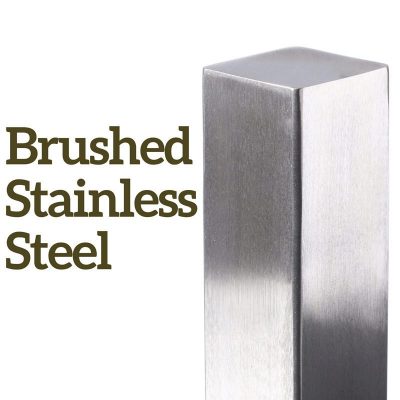
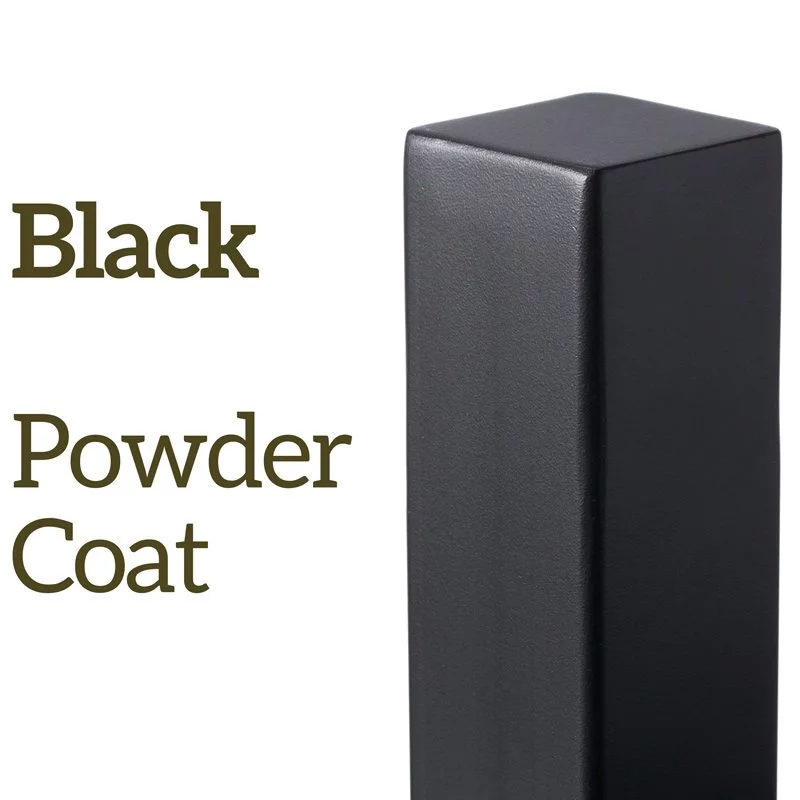
Each metal can be powder coated to prevent wear overtime, as well as fit desired design. Standard powder coat systems have a 1 year for exterior projects and up to 5 years for interior projects to cover fading, adhesion, and corrosion as a result of finish failure. Superior Performance Powder Coats are warrantied for 10 years to cover fading, adhesion, and corrosion as a result of finish failure.
Step 5: Buy Your Cable Railing Kits
Understanding what components are needed for your post type is the final step. There are three cable railing kits and two intermediate hardware kits for the Viewrail Signature cable rail system.
Angle Tension Cable Railing Kits (B, D, I Posts)
Level Tension Cable Railing Kits (A, D, I, C Posts)
Inside Post Mount Cable Railing Kits (C, and part of G and H Posts)
Adhesive Sleeve Kits (B-5 Intermediate Posts)
Steel Insert Sleeve Kits (A-2 Intermediate Posts)
When choosing your cable kits, make sure to choose the correct amount. For a 36” system 10 packs are required, for a 39” system 11 packs are required, and for a 42” system 12 packs are required.
Level cable railing measurements, like on a deck, are even easier. Simply provide the “outside to outside” measurements of your run, and Viewrail will take care of the rest. Cable railing is extremely forgiving, and typically the cable spool and cable railing handrail will be slightly oversized to ensure a perfect fit.
Most deck railing code requires a handrail between 36”, 39”, or 42”. Again, it will be worthwhile to check your local requirements, but most level railings are either 39” or 42”.
How to Maintain Your Cable Railing System
Depending on the location of your project, there is likely to be little to no maintenance over the years. Some common system needs are: yearly maintenance check or touch up of exterior wood products, using the allen wrench to retighten any cable or rod runs that might have been stretched, or removal of dirt or leaf build up against the product.
If you have an exterior project, we recommend applying our Marine 31 Polish and Sealant to exposed stainless steel, specifically the cables as they have a lot of ridges and surface area. This adds a layer of protection between the steel and the elements.
If you notice build up on your post or cables, you can usually wipe this down with a rag and a stainless steel cleaner. The Marine 31 Polish works well. Sometimes a surface rust can appear. Not to worry, surface rust is exactly what it sounds like, a surface condition.
This does not mean your post is corroding, and nearly every time this can be removed. Simply use a stainless steel cleaner and a rag, and if that doesn’t completely remove it you can use a Scotch-Brite pad for the more difficult areas.
Other than this specific scenario, there isn’t really maintenance to a metal railing system. You can have peace of mind knowing you have years and years of worry free, beautiful railing.
Additional FAQs
Is Cable Railing More Expensive Than Wood Systems?
The cost of cable railing versus wood railing can vary depending on several factors such as the materials used, the design of the railing, the length of the railing, and installation costs.
Generally speaking, cable railing systems are often more expensive upfront compared to wood railing systems. The cost of the cable itself, the fittings, and installation can add up quickly. However, cable railing systems are often more durable and require less maintenance than wood railing systems, which can offset the initial cost over time.
Do Cable Railing Posts Need to Be Closer Than Wood Systems?
Cable railing posts typically need to be closer together than wood railing systems. This is because the tension on the cables can cause them to sag or deflect over longer distances, and closer post spacing helps to minimize this effect. The exact spacing required will depend on a variety of factors, such as the cable diameter, the length of the cable runs, the height of the railing, and the type of posts and fittings used.
The International Building Code (IBC) and other building codes typically specify minimum requirements for post spacing, cable diameter, and other parameters for cable railing systems. It is important to follow these requirements to ensure that the railing is safe and meets building code standards. Cable railing code is something we’ve covered extensively.
How Big is the Cable Railing Wire?
The size of the cable railing wire can vary depending on the specific application and the desired aesthetic. Cable railing systems typically use wire ropes made of stainless steel that range in size from 1/8 inch to 3/8 inch in diameter. The most common size for residential applications is 1/8 inch, while larger diameters are often used for commercial or industrial applications where greater strength is required. However, it’s important to note that the specific size of the cable railing wire will depend on factors such as the distance between posts, the height of the railing, and the weight that the system needs to support. Therefore, it’s best to consult with a professional installer or manufacturer to determine the appropriate size for your specific needs. Viewrail’s Standard cable railing is 1/8″ cable railing wire.
